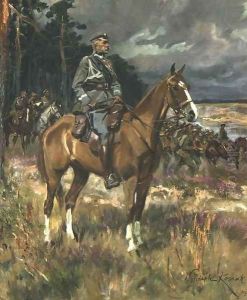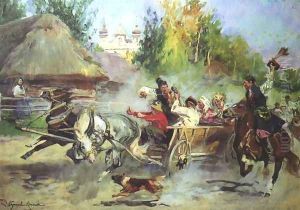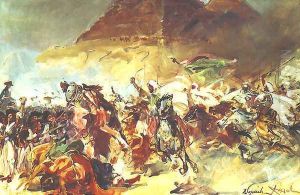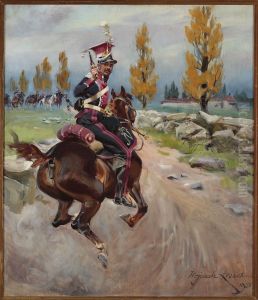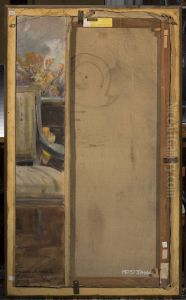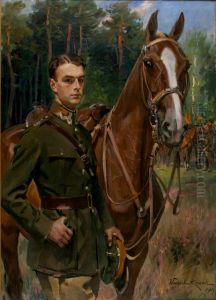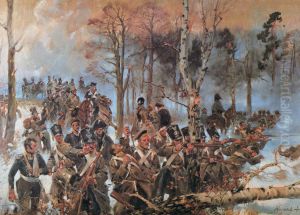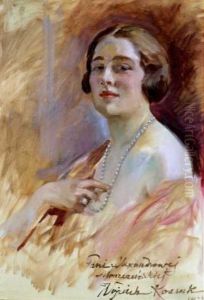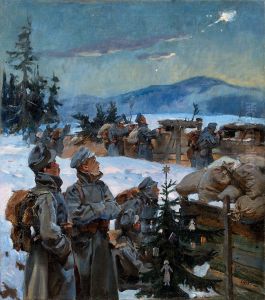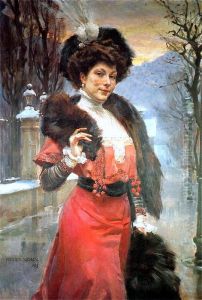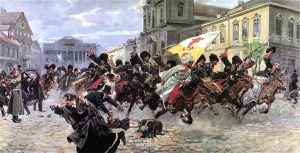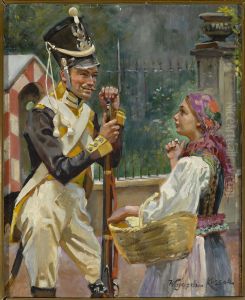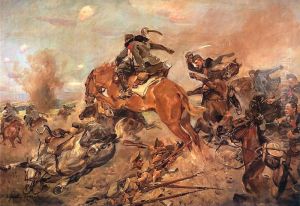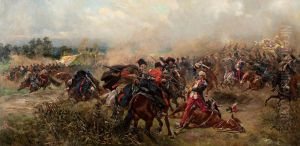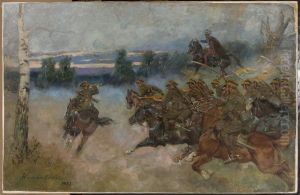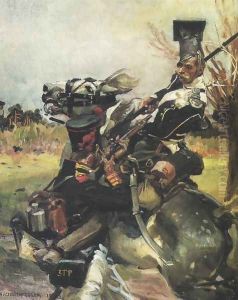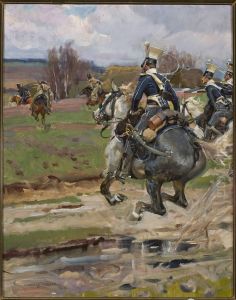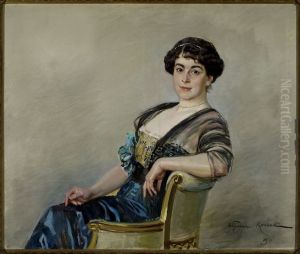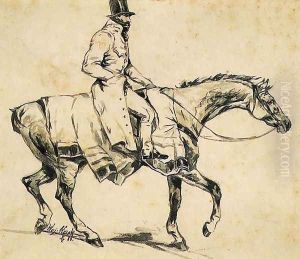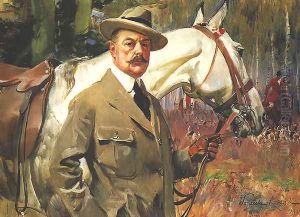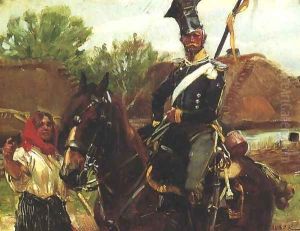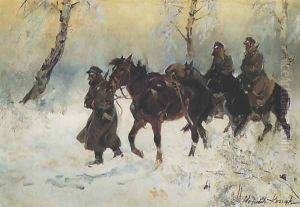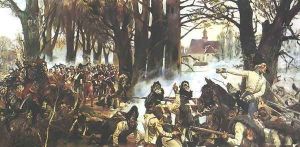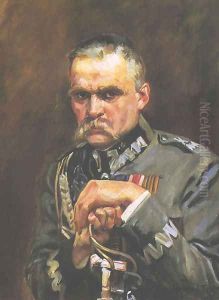Wojciech Kossak Paintings
Wojciech Kossak was a Polish painter known for his impressive battle scenes, portraits, and depictions of horses. Born on December 31, 1856, in Paris, France, he was a member of the celebrated Kossak family of painters and artists. His father, Juliusz Kossak, was also a respected painter, specializing in military subjects, which influenced Wojciech's later work.
Kossak's upbringing was conducive to his development as an artist. He studied at the School of Fine Arts in Kraków and later at the Academy of Fine Arts in Munich. His education was marked by a rigorous training in drawing and painting, and he was particularly influenced by the Munich school's focus on realism and detail.
During his career, Kossak painted many significant historical scenes. His works often portrayed key events in Polish history, such as the battles of the Polish-Lithuanian Commonwealth. He is best known for his painting 'The Racławice Panorama,' which depicts the Battle of Racławice during the Kościuszko Uprising. This monumental painting was created in collaboration with other artists, including Jan Styka, and is displayed in a circular fashion, giving viewers an immersive experience.
In addition to historical scenes, Kossak was also a master of portraiture and genre scenes. His portraits often captured the likeness and personality of his subjects with great skill. He painted several members of the Polish aristocracy and military figures, as well as scenes of daily life in Poland.
Kossak's legacy extends beyond his paintings. He was a patriot who loved his country and often depicted its struggles and glories. During World War I, he served in the Polish Legions. His work remains popular in Poland, and his paintings are considered national treasures.
Wojciech Kossak passed away on July 29, 1942, in Kraków, during the difficult years of World War II. His art continues to be exhibited in museums and galleries, preserving his vision of Poland's past and the beauty of its landscapes and people. Kossak's contribution to Polish art is commemorated through numerous exhibitions and retrospectives, and his work is a lasting part of Poland's cultural heritage.
